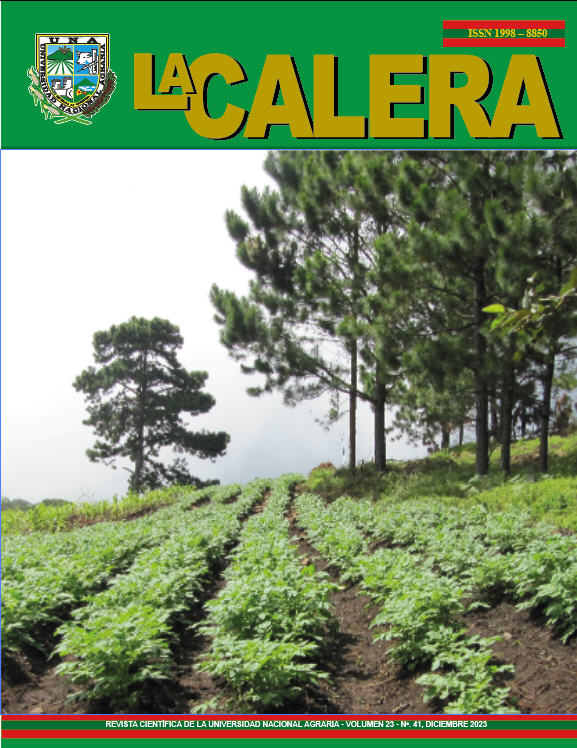Erodability in Andisols, Mollisols and Vertisols soils from the Pacific region of Nicaragua
DOI:
https://doi.org/10.5377/calera.v23i41.16678Keywords:
Multiple linear regression model, surface permeability, aggregate stability, silt soil percentage, soil organic matter contentAbstract
Prediction models are an alternative to reduce costs for monitoring soil erosion in the field. The objective of this research was to propose a local model of greater erodibility (K) prediction, for this, thirty soil samples were collected in seven municipalities of the Pacific region of Nicaragua in Andisols, Mollisols, and Vertisols soils, under different productive uses. The variables studied were: surface soil permeability and soil type structure in the field. In the laboratory; granulometry, soil organic matter and soil aggregates stability. Statistical analyzes were performed using the RStudio (2022) software, applying Shapiro-Wilks normality tests, Kruskal-Wallis non-parametric analysis, and the Multiple Linear Regression Model. Were the variables with the highest incidence in the soil erodibility are the percentage of silt, very fine sand, and the superficial soil permeability. The proposed Multiple Linear Regression model K=-0.0608+0.0076(a)+0.0123(b)-0.0261(c) -0.000056(d)+0.0011(e), found that the variables: percentage of silt (a), percentage of very fine sand (b), organic matter content (c), surface permeability (d) and aggregate stability (e), present high and significant predictive power of 87.64%, with a Pr(>|t|)= 2.06 ×10-10, 5.34×10-5, 8×104, 12×102 and 11×102 respectively.
Downloads
515
EPUB (Español (España)) 138
PDF (Español (España)) 150
Published
How to Cite
Issue
Section
License
Copyright (c) 2023 Universidad Nacional Agraria

This work is licensed under a Creative Commons Attribution-NonCommercial-ShareAlike 4.0 International License.

